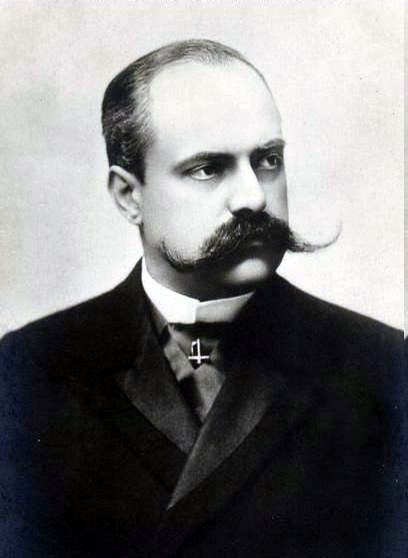 |
| Prince Victor Napoléon and Alice Biot. |
In 1905, reports in the Belgian press, which spread to international outlets, increasingly indicated that Prince Victor Napoléon, Head of the Imperial House of France, and Princess Clémentine of Belgium had fallen in love and desired to marry. However, there were several impediments to their plans to wed. King Léopold II of Belgium, the father of the princess, was not keen on such a union as he did not want to upset the French Republic. Further, there was much made about the liaison of the Prince Napoléon with a former French ballerina named Marie Alice Biot. It was written that the couple had married and had children. This pre-existing marriage would obviously get in the way of Victor and Clémentine's hopes to become husband and wife.
 |
| Prince Victor Napoléon. |
Prince Victor Jérôme Frédéric Napoléon was born at the Palais Royal in Paris on 18 July 1862 as the first child and eldest son of Prince Napoléon Bonaparte (1822-1891) and Princess Clotilde of Savoy (1843-1911), who married in 1859. Victor's paternal grandparents were Prince Jérome Bonaparte, erstwhile King of Westphalia, and his second wife Princess Catherine of Württemberg. Victor's maternal grandparents were King Vittorio Emanuele II of Italy and his first wife Archduchess Adelheid of Austria. At the time of Prince Victor's birth, his first cousin once removed was Emperor Napoléon III of the French, who was deposed in 1870.
 |
| A short profile of Alice Biot in Ces demoiselles de l'Opéra, 1887. |
Sometime during the 1870s, Prince Victor Napoléon began a relationship with Alice (Marie) Biot, a ballerina at l'Opéra in Paris. At a very young age, Mademoiselle Biot made her début at the Paris Opéra in May 1870 at the premiere of the ballet
Coppélia in the role of Cupid. In March 1880, Alice danced in the premiere of the ballet
Aida. A brief 1887 profile of the ballerinas of l'Opéra noted that Biot was "
an intelligent and amiable person. [She] works very much. [She] leads a simple and normal life." Alice Biot retired from the Opéra in 1896.
 |
| Alice Biot. |
The liaison between the prince and ballerina only became public knowledge nearly thirty years after it began. Victor's desire to marry Clémentine left the door open for the press, perhaps aided by persons [i.e. King Léopold II] not wishing their attachment to materialise into marriage, to report on his ties with Alice. It was widely noted that at some date Prince Victor Napoléon and Alice Biot had religiously, but not civilly, married in France. They had several children together. When Victor moved to Brussels, Alice and their children followed him to the Belgian capital. While the prince lived in home on the Avenue Louise, his apparent wife and their children lived in a separate residence, though not too far from his own.
 |
| Pierre Biot. |
 |
| Eugéne Biot. |
 |
| Suzanne Biot. |
Within the past two decades, more information has come to light about Victor Napoléon and Alice Biot's relationship. It is not certain whether the couple were ever religiously married, as no church records have been found to confirm this. One of the most insightful resources on the couple is a biography of Victor entitled Le Prince Victor Napoléon, which was written by his great-granddaughter Laetitia de Witt and published by Fayard in 2007. This work confirms that Victor and Alice were together for quite some time. Laetitia de Witt writes that Alice Biot was granted the title of Contessa di Beauclair/Beauclerc (Comtesse de Beauclair/Beauclerc) by King Umberto I of Italy at the request of Prince Victor. De Witt also writes that Victor and Alice had two sons: Pierre and Eugéne. It is possible that the pair had a further child, a daughter named Suzanne, who is not mentioned in the biography of Prince Victor. Aside from Suzanne, whose descendants have published genealogical information online regarding her life, it is not known what became of Pierre and Eugéne.
 |
| The acte de mariage of Suzanne Biot and Walter Unger, 1898. |
On 21 December 1898 at Paris, one Alice Marianne Suzanne Andrée Biot (born at Paris on 13 March 1882), the daughter of a Marie Biot and an unnamed father, married Walter Unger (born at Vienna in January 1869), a cavalry officer in the Italian army and the son of Charles Unger. Among the witnesses to the marriage were Count Edouard d'Harcourt, a M. Biot de Beauclerc (possibly the mother of the bride), and an Austrian count. If Suzanne Biot was indeed the daughter of Prince Victor Napoléon, then the prince has many descendants alive today who are not a part of the Imperial House of Bonaparte.












No comments:
Post a Comment